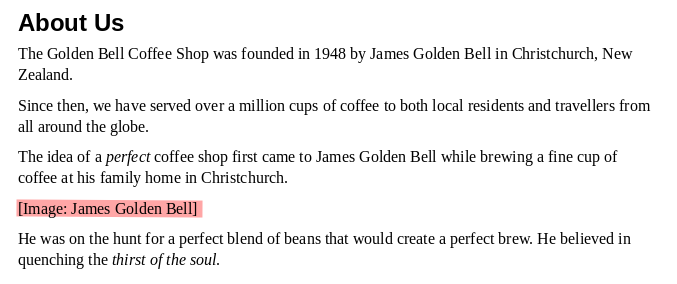Standard Website Content Guidelines
This help article applies to a standard website. For e-commerce website content guidelines, please click here.
When you order a website form us, we will request content from you at the appropriate stage. This guideline will help you prepare and submit content that is acceptable for developing most standard websites. It contains information on the types of file formats and resolutions (for digital media), as well as other important information.
It also contains information on how to send your files and content to us securely.
Disclaimer
At any time, please only submit content that you legally own, or otherwise have legal right or permission to use on your website.
We will never accept or work with images that violate a third-party’s intellectual property rights on your website.
We will also not accept any content:
- that displays or promotes any form of nudity, or that may otherwise be classified as “adult content”, which may be generally unsuitable for an audience under the age of 18 in New Zealand, or the legal age in any other country, state, or territory, including from where your website will be accessed;
- that displays, supports, intends to, or has the potential to incite race-based, gender-based, sexual orientation and identity-based violence, crime, or hatred;
- that contains graphic details of death, murder, crime, or any other content which can be classified as “gore”;
- that is intended to, or has the potential to spread propaganda or hatred against the New Zealand Government, rule of law, or that has the potential to disrupt or affect national security in New Zealand;
- that contains any form of child pornography, child sexual abuse, child abuse, or any form of abuse in general, including that to adults; and
- that is prohibited from being published online or on a website under New Zealand Law.
In addition to the above, we may also, at our absolute discretion, refuse to work with content that violates any of our internal policies and rules.
Where necessary, we will fully cooperate with law enforcement agencies in both New Zealand and other countries, for any requests to access files and data you provide for the purposes of publishing on your website.
Types of Content
When we are developing your website, we will request various types of content. These content types are discussed below.
Images
Images are great visual tools and the life of your website. They can be used to showcase your business, products, and services, and can also be used to portray various statements and causes that your business or organisation supports.
Images can be either owned by you, or sourced from a stock image repository with appropriate commercial licensing.
When submitting your images to us, please ensure the following requirements are met for the best experience:
Resolution
Where possible, we recommend sending us images that are wider than 1920 pixels. This resolution is also known as “high-resolution” (or “high-res”, “HD”), and ensures that your website has clear and crisp images, which affect user experience.
Images having lower resolutions may appear blurred or distorted when viewed on different screen sizes, resulting in an unpleasant user experience.
Image File Formats
Unless we specify another format, we can only accept your images in the following file formats:
- .WEBP (recommended)
- .PNG
- .JPEG or .JPG
- .GIF
Images using other formats may not be readable by some of the Content Management System (CMS) we use. If your image is in a different format, you can use various online tools to convert them to an acceptable format.
Text
Also known as the “copy”, the text content of your website provides more information about your business, services, and products. When creating the text content for each page of your website, please ensure the following guideline is followed:
Formatting Your Text
Where possible, we encourage that you use minimal formatting. You may use the standard formatting options, such as bold, italics, and underlined text to tell us how you would like them to appear on your website.
If you use a word processor for your text content, please use the default font of your word processing application. If you use third-party font, we may not have access to the font (unless it is embedded to the document).
To help us distinguish between the different sections of your text content for each page, ensure you use appropriate headings and heading levels (e.g., H1, H2, H3, etc.).
Specifying Image Locations
Where an image appears on your text copy, please insert the file name of the respective image in brackets as a placeholder like:

Best Practice: Ensure you double-check your file image names for proper linkage.
File Format
You must submit your text copy files in the .PDF format only.
Most modern word processors have built-in features to convert or save your file in the .PDF format. Please refer to the user manual of your word processing application for more information. Additionally, you may use several online resources to convert your native file formats to .PDF.
Ensure you check the layout of the file format after saving it or converting it to .PDF.
Logo and Graphics
Your website can also contain various graphics. These include your business or brand logos and other decoration elements.
File Format
When providing your graphics, we recommend you submit a vector illustration instead of a raster file. The most common file formats that we can work with include:
- .AI
- .SVG
- .EPS
- .PDF (only for your vector logos)
You can send us your files in other image formats as listed above if you don’t have a vector copy as long as the resolutions are good enough to be used on the website without the images or graphics being distorted.
